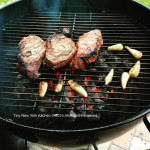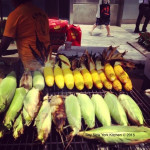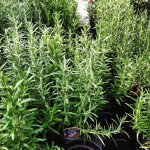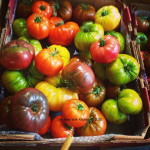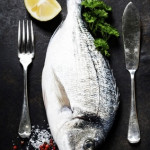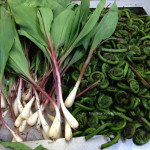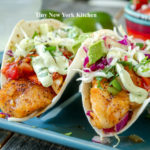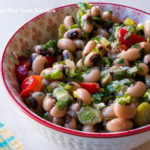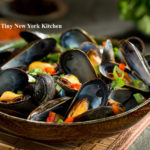Whenever I come across bison at the butchers I snap it up right away. It’s so much leaner than beef, which I like. I love to grill it and serve with a green salad and corn on the cob. I made sure to marinade these bison steaks a good 24 hours to ensure that they would come out tender and not dry. If you can find bison in your area I highly recommend picking some up. Often times Whole Foods will tend to carry it.
“Work With What You Got!”
© Victoria Hart Glavin Tiny New York Kitchen © 2015 All Rights Reserved
Flag Day
In America, Flag Day is celebrated on June 14th. It commemorates the adoption of the United States flag, which happened on June 14, 1777, by resolution of the Second Continental Congress. The United States Army also celebrates the Army Birthday on this date. Congress adopted “the American continental army” after reaching a consensus position in the Committee of the Whole on June 14, 1775.
In 1916, President Woodrow Wilson issued a proclamation that officially established June 14th as Flag Day. In August 1949, National Flag Day was established by an Act of Congress, however Flag Day is not an official federal holiday.
On June 14, 1937, Pennsylvania became the first U.S. state to celebrate Flag Day as a state holiday, beginning in the town of Rennerdate.
New York Statutes designate the second Sunday in June as Flag Day, a state holiday.
Possibly the oldest continuing Flag Day parade is in Fairfield, Washington. Beginning in 1909 or 1910, Fairfield has held a parade every year since, with the possible exception of 1918, and celebrated the “Centennial” parade in 2010, along with some other commemorative events.
Quincy, Massachusetts has had an annual Flag Day parade since 1952, and claims it “is the longest-running parade of its kind in the nation.”
The largest Flag Day parade is held annually in Troy, New York, which bases its parade on the Quincy parade and typically draws at least 50,000 spectators.
The Three Oaks, Michigan Flag Day parade is held annually on the weekend of Flag Day and is a three-day event. They claim to have the largest Flag Day parade in the nation as well as the oldest.
“Work With What You Got!”
© Victoria Hart Glavin Tiny New York Kitchen All Rights Reserved
Tiny New York Kitchen Out & About
One of the great things about summertime in New York City is spotting all of the ice cream trucks around the city. It seems like there’s one on every corner!
It nice to see that the NYPD is using Smart Cars for traffic patrol. Way to save the enviorment New York!
Shopping a For More Kitchen Herbs!
Certain Produce Shouldn’t Be Stored In The Refrigerator
With some fruits and vegetables cold temperatures can lead to unsavory textures and flavors. Let tomatoes sit on the counter at room temperature, and store onions, garlic, and potatoes separately in a cool, dark place in perforated baskets or bins to allow for good airflow. Make sure to keep all fresh produce away from direct sunlight.
Onions & Garlic can lose crispness and become moldy when exposed to the refrigerator’s moisture. They can also impart their flavors on foods stored nearby.
Tomatoes flavor often diminishes when they’re chilled, and the texture can turn mealy as the cold temperature breaks down the membranes inside the fruit.
Potatoes starch content converts to sugar when cold, which leads to an unpleasantly sweet taste and discoloration when they’re cooked.
“Work With What You Got!”
© Victoria Hart Glavin Tiny New York Kitchen All Rights Reserve
Tiny New York Kitchen Wishes You A Very Happy Sunday!
Cooking Fish
Here is the simple secret to cooking fish successfully: Just don’t overcook it. Cook it until the flesh is just opaque throughout, as it will continue to cook after it has been removed from the heat.
Before cooking fillets, especially thick ones, run your fingers over the flesh to feel for any stray bones. Remove them with tweezers set aside for that purpose.
To check fish fillets or steaks for doneness, use the tip of a small knife to separate the flesh in the thickest part. It should be uniformly opaque. To check whole fish, make an incision at the backbone to see if the flesh is opaque or insert and instant-read thermometer in the thickest part near the backbone. The thermometer should read 135 to 140 degrees.
Before cooking clams, mussels, or oysters, scrub the shells well under cold running water to remove any surface sand and grit.
“Work With What You Got!”
© Victoria Hart Glavin Tiny New York Kitchen All Rights Reserve
This is my idea of heaven. An abundance of fiddleheads and the last of spring ramps. Oh the possibilities!

